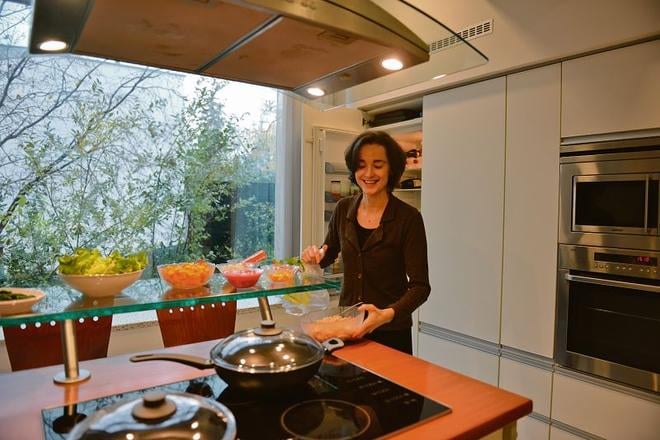WHEN Susan Kleebank carves out the top of a pumpkin on a November afternoon and removes the seeds and pulp inside, she is not doing it for Halloween. The ambassador of Brazil is actually preparing in her Bratislava kitchen a dish that comes from the coastal area of her homeland: a pumpkin stuffed with shrimp. When Kleebank explains that in the culinary paradise of Brazil each of the five regions has its own unique, traditional dishes, from grilled fish to feijoada (a pork and bean stew) to mandioca, one instantly understands that choosing one dish was not an easy task.Brazilian recipes: Cheese tartletsBrazilian recipes: Pumpkin stuffed with shrimpBrazilian recipes: Passion fruit mousse
“The variety of food we have reflects both the richness of our country as well as the course of our history,” Kleebank said while placing the shrimp into a frying pan. “Each region of Brazil has melted together from different cultures, such as the native Indian, the African, and the Portuguese, just to name a few.”
The pumpkin stuffed with shrimp would typically be served after a long day on the Brazilian beach, like the one in Saint Catherine, the location featured in a short video that Kleebank shows to her guests. Not hiding her enchantment with her homeland, she says: “I am so proud of all the natural richness that we have”.
Nevertheless, the ambassador explains that she picked a dish that is simple and easy to prepare since all of the ingredients can be found even in Slovakia. Then she promptly adds that the association of the pumpkin with Halloween is not necessarily out of place.
“If you consider that November [sic] is the month of Halloween, one combines entertaining with something functional,” Kleebank said, adding that a good way to keep one’s children entertained and preoccupied is to have them scoop out the pumpkin’s innards.
She offers a glass of the favourite Brazilian soft-drink, made from the guarana fruit, while recounting a popular indigenous myth about how the plant sprang from the eyes of a child killed by a snake after they were planted by a divine creature in the ground. Para nuts, or Brazil nuts, from the forests of her homeland, are served in white porcelain on a richly embroidered red tablecloth. They are beneficial for health and beauty, and are said to possess anti-aging properties, she says while explaining the nut’s powers.
Yet, the way Kleebank arranges the ingredients in her kitchen leaves no doubt about the role of presentation in Brazilian cuisine.
“Your eyes tell you what you want to eat,” says Kleebank while garnishing the stuffed pumpkin with green asparagus, thin slices of red bell pepper, red cherry tomato, cilantro and two small yellow-and-green Brazilian flags.
When asked about the national dish of her country, Kleebank explains that it is difficult to pick one since Brazil is the size of a continent and each region boasts a different type of food.
However, what might link these diverse regional cuisines are the side-dishes, which, regardless of the type of meat, always include salads, rice and also manioc flour, made from the manioc, or cassava root, which is widely used in Brazil.
For example farofa, a toasted manioca flour mixture that people use to prepare a dish with mixed onions and small pieces of bacon, is consumed almost everywhere in the country, Kleebank said, adding that rice, beans and farofa would indeed serve as a unifying element amid the variety of all the dishes.
“All the cultures coming to Brazil have influenced the food in some way,” said Kleebank, explaining that in the south of Brazil, where she is from, German families used to prepare potato balls and semolina, but adapted the recipe for manioc flour instead. “Gnocchi, which is a kind of Italian pasta - you have something similar in Slovakia [halušky], which you are making from potatoes - in Brazil, in many places, manioc flour is used for the preparation of this dish and it is very good.”
Kleebank adds that cuisine is quickly becoming widely globalised and if a nation has a good dish, people will want to consume it anywhere in the world.



 Susan Kleebank shows off the colourful array of ingredients.
Susan Kleebank shows off the colourful array of ingredients.